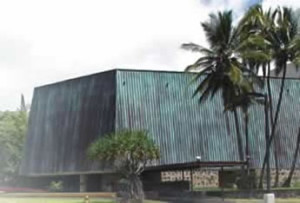“Look to the right of you and look to the left of you,” the man from Hawaii Public Radio said. I had a flashback to law school orientation and the ethics professor (insert lawyer joke here) who said we would sleep with one of those people. Fortunately, in this Hilo auditorium, my husband was sitting next to me. Instead, the HPR man continued, “This is your tribe.”

David Sedaris stood at a simple wooden lectern that looked like something my husband would have built. (Built now, that is, when any spare time is devoted to constructing basic pieces of our house, not in our mainland days when he could putter and make pretty furniture with bigger and better tools that we’d need a big generator to run here.) Sedaris read from a stack of papers that he shuffled through, glancing at his watch to note his reading times. As he read aloud, he scribbled annotations—little word changes that would work better—editing on the fly. One piece was being read for the first time, he admitted afterwards, and he hadn’t been sure about the ending. At some point it hit me: of course I’m in David Sedaris’s tribe. He’s a writer. I tend to think of him as a performer. And as a writer, he connects with people the way I want to connect with them.

You hear a lot about the idea of tribe in the indie publishing community, about finding the readers who really resonate with your work. These are the people who will read everything you publish, and they’ll tell their friends how much they love it and make them read it, too. If you publish something that’s a little different, a little unexpected, or maybe it’s one of your lesser titles, your tribe will give you a second chance. Sort of like Apple, before they lost sight of the indie we-don’t-need-to-be-Microsoft vibe that made them so awesome. (Did you hear they’re talking about making cars??) Certainly not everyone in that auditorium was in David Sedaris’s tribe. Some people went with friends who were fans, or decided to take a chance on someone whose work they didn’t know because no one ever comes to perform in Hilo. Most of those people probably still enjoyed themselves, but I doubt they went home and named a coqui frog “ThankYouForComingToHiloAwesomeDavidSedaris.”
(Note: Yes, I would be the coqui-namer; to fully appreciate the name, you have to track down his Nicaraguan French story.)
[UH Hilo Performing Arts Center exterior from http://artscenter.uhh.hawaii.edu; David Sedaris from www.uptowntheatrenapa.com/event/david-sedaris/]
